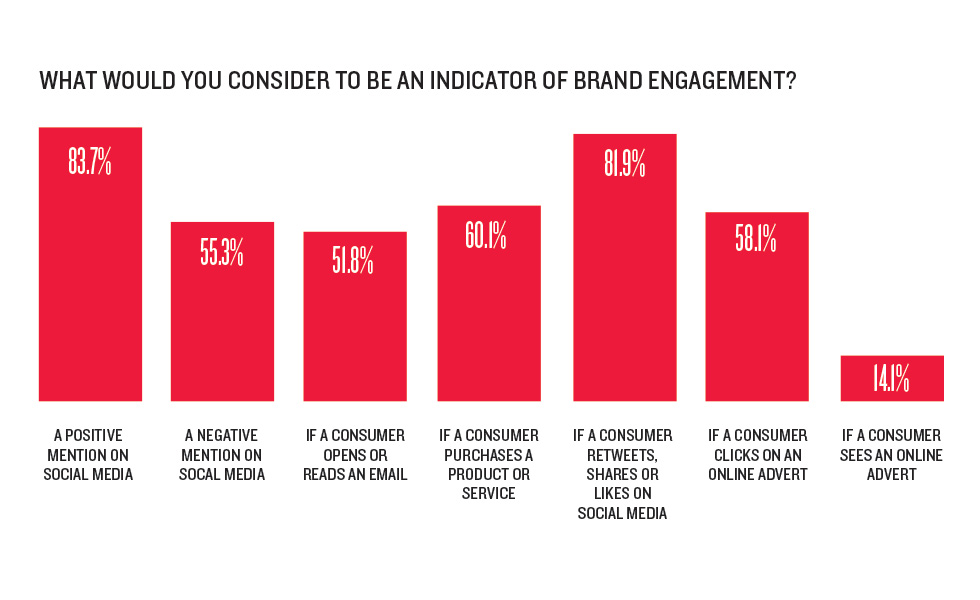Brand Engagement in an Ever-Connected Marketplace
 In the not-so-distant past, brand engagement was, like most media and advertising efforts, easily calculated, tracked and controlled. Advertisements were seen for a specific time frame by a set number of consumers, products were featured through in-person demonstrations in stores and malls, where the brands themselves drove the interaction and could control when and how they were perceived.
In the not-so-distant past, brand engagement was, like most media and advertising efforts, easily calculated, tracked and controlled. Advertisements were seen for a specific time frame by a set number of consumers, products were featured through in-person demonstrations in stores and malls, where the brands themselves drove the interaction and could control when and how they were perceived.
This is no longer the case. Today, brands are faced with both the ease and the issues that come with online brand engagement opportunities, where measurement is tracked via software programs and engagement rates are dependent on the consumer.
Marketing Week recently released the results of a survey on how companies indicate brand engagement. The results are telling – all seven of the top results are tied back into online and social media marketing, where the engagement is indicated by an action taken on the part of the consumer.
Not only does this indicate a shift in the power structure for brand engagement, but it also shows how frequent these engagements can take place. Social media mentions don’t follow a schedule – they can occur 24/7/365, just like email opens and online advertisement clicks. Additionally, the multi-faceted engagement opportunities provide for one consumer to engage a brand through multiple channels within a short time frame.
One of the main benefits of this constant connectivity resides with those looking to improve their brand sentiment. Brand engagement is often the fastest way to change perception about a brand, especially with individual users. Therefore, in a day and age when these same users have the opportunity for countless brand engagements online in a brief amount of time, therein lies the opportunity to turn negative sentiment into positive quickly through on-point and successful brand engagement strategies.
And yes, this same principle can have the opposite impact. Just as a brand can take a step forward in the brand perception department, so too can a brand take ten steps backward by virtue of a brand engagement misstep.
For brands, these changes result in a growing need for consistent brand performance, across all channels for an extended period of time. When the consumer controls the timing of engagements, the brands can’t let their guard down, allowing for an interaction to occur when they aren’t at their best. Whether this is an ill-advised social media post, a website issue, a less-than-perfect email campaign, or any other action that leaves the door open for negative engagement, brands who succeed in this area of their strategy are constantly vigilant in this area.
Learn more about building your best brand portfolio strategy by downloading this FREE webinar, “Identifying The Opportunities In Your Brand Portfolio – Are You Capitalizing On Every Potential Business Opportunity Your Portfolio Provides?”
